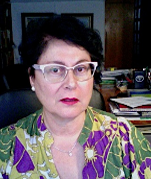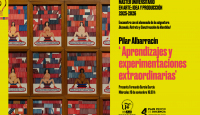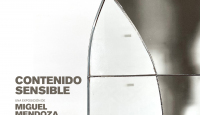General Information
As the verification report portrays, the Bachelor of Conservation and Restoration of Cultural Heritage of the Faculty of Fine Arts has a an updated and rigorous training. It is based on humanistic and scientific knowledge, it also has a wide offer in the treatment of different kinds of Cultural Heritage: painting, sculpture, graphic artwork, knitting, archaeological and ethnological matera, etc. Its main teaching principles are based on the consideration of CULTURAL HERITAGE, as an unique element which has a great value to society. The specific training is very important for the proper preservation and treatment. This Bachelor has a wide range of career opportunities, related with culture, and linked to training, research, diffusion, and the value of Cultural Heritage (private and public sector). The speciality of Conservation-Restoration comes from the "Licenciatura" of Fine Arts 25 years ago. It has a great prestige and it is very demanding. Lately, the Faculty has been going through a decisive evolution, incorporating new technologies and new methods.
The students of this bachelor must confirm, before applying for the tittle, the recognition of a foreign language, B1 level (Common European Framework of Reference for Languages). More Information.
Horizontal and Vertical Coordination of the Bachelor
| Bachelor's Coordinator | ||
| Contact Information: | Functions:
| |
Mª José González López |  | |
| Bachelor of Conservation and Restoration of Cultural Heritage | ||
| Coordinators of the Bachelor of C+R: | Functions:
| |
| Contact Information: | ||
First Year: Raquel Barrionuevo Pérez |  | |
Second Year: Beatriz Prado Campos |  | |
Third Year: Marina Mercado Hervás |  | |
Fourth Year: Pending Nomination | ||
ADDITIONAL INFORMATION: You can find more information in the following documents:
Brochure of the Bachelor C+R. University of Seville
Students Guide of the University of Seville
Brochure Faculty of Fine Arts
Objectives
The Bachelor of Conservation and Restoration of Cultural Heritage has the purpose of maintaining the commitment of the Conservator-Restorer that defines this profession: the preservation of Cultural Heritage, that consists in the examination and diagnosis of Cultural Heritage, in a precautionary, curative and restoration way, likewise the documentation.
The aim of the training of a Conservator-Restorer is the development of qualified, trained and prepared professionals, in order to make researches, diagnoses and interventions that may be required, from the most simple ones to the most difficult ones. The objective is that the work and the recorded data contribute to preserve art, but mostly, to a deepest understanding of the historical and artistic events in relation with the object that will be treated.
Skills
The Conservation is the activity of Conservators-Restorers. It consists in the technical exam, the preservation, and the conservation-restoration of Cultural Heritage: The examination is the first step to accomplish and determine the original structure and the components of an object, as well as the deterioration or imperfection that the objects may have suffered, and the documentation. The Conservation is the main action of delay or prevent the deteriorations, alterations and imperfections that the objects usually suffer, as a way to control its environment and/or the treatment of the structure, in order to keep them stable as long as possible. The restoration is task carried out to identify an object as damaged, and keep its historical and aesthetic image (Code of ethics "ICOM", 1984).
The general and specific competences of the Bachelor of Conservation and Restoration of Cultural Heritage of the University of Seville are included in the Verification Report of the Bachelor:
GENERAL COMPETENCIES:
Basic knowledge in the artistic studies area, which is drawn from the premise of general secondary education, and supported by advanced texts book; it develops the proposal of the Bachelor of Fine Arts.
Capacity to apply artistic knowledge to work interests or the students vocation in a professional way. Disposal of the skills that are usually portrayed through the elaboration and defence arguments, and the resolution of problems within the scope of Cultural Heritage.
Capacity to gather and interpret information (usually of artistic nature) to send out opinions that have a reflection about important topics related with society, sciences, or ethics.
Capacity to transmit information, ideas, problems and solutions, in a written or verbal way, to an audience that might be specialized or not.
After having developed the necessary learning skills to continue with subsequent studies with a high level of autonomy.
Capacity to use searching tools of bibliographic resources.
Capacity to express oneself correctly in Spanish in an verbal and written way.
Capacity to communicate in other important languages of the Cultural Heritage field.
Sensitivity to sociocultural and environmental problems, and the those related to the conservation of the cultural heritage.
Capacity to work in groups.
Capacity to apply ethics as an essential value in a professional scope.
Capacity to encourage the entrepreneurial spirit.
Capacity to promote and guarantee the respect of the Human Rights and the universal accessibility principals, equality, no discrimination and the democratic values, and the culture of peace.
SPECIFIC COMPETENCIES:
Consciousness of an universal idea of the Cultural Heritage.
Consciousness of the Cultural Heritage's concept as a common good to transmit to future generations.
Consciousness of the uniqueness of artworks, properties, aesthetic and historical meaning, and physical integrity.
Consciousness of the Cultural Heritage's fragility due to variations of the aesthetic, historical, material, economic and spiritual values that happen over time.
Consciousness of the importance of humans as creators, transforming and destroying of the Cultural Heritage.
Comprehension capacity and the application of vocabulary, criteria, codes, and inherent concepts to the artwork and to it preservation.
Capacity to use different artistic resources.
Critic comprehension of the aesthetic values evolution,and historical and anthropological in relation with Art.
Artistic comprehension and application of the fundamentals of Drawing, Colouring and Volume.
Basic knowledge of the scientific and research methodology: analysis, interpretation and synthesis.
Capacity to make an exam and the diagnoses of the Cultural Heritage in order to determine the original structure, and the object's components, the extent of impairment, alterations, the losses that it might have suffered, and the kinds of treatment that it may require.
Capacity to select analytical systems and the testing methods that are demanded by Cultural Heritage, according to it conservation status; as well as to interpret data derived from the results obtained.
Capacity to identify the alteration factors, degradation processes, and the manifestation of Cultural Heritage.
Capacity to learn about and value the Cultural Heritage and its context.
Capacity to use graphic, photographic and computing resources.
Capacity to deal with documentary and bibliographic sources.
Capacity for collaboration with other profession that work with Cultural Heritage and with professionals from the scientific sphere.
Knowledge of constituent materials of Cultural Heritage and the creation process.
Capacity to apply the materials and techniques required in the development of different artistic processes.
Knowledge of materials, tools, and the methodology used in the preparation and realisation of the conservation-restoration precesses applied to Cultural Heritage.
Capacity to determine the specific activities of the conservation-restoration processes.
Capacity planning, capacity management, and capacity to supervise Cultural Heritage projects.
Capacity to determine and implement Conservation and Restoration interventions of Artworks.
Capacity to determine and apply the specific methodology that is required by different Conservation and Restoration treatments.
Ability to perform strengthening treatments of Cultural Heritage, according to the criteria regulated by the Conservation-Restoration practise.
Ability to perform cleaning treatments of Cultural Heritage, according to the criteria regulated by the Conservation-Restoration practise.
Ability to perform volumetric and chromatic treatments of Cultural Heritage, according to the criteria regulated by the Conservation-Restoration practise.
Capacity to discern and propose preventive conservation activities of Cultural Heritage, in order to create the best conditions to the conservation of the object.
Capacity to make preventive actions to create the best conditions, in order to guarantee a suitable conservation of Cultural Heritage.
Capacity to identify potential risks and establish the monitoring and evaluation phases, and the action and servicing guidelines, demanded by the Cultural Asset.
Capacity to determine and develop sustainable and proper systems in relation with the appearance and diffusion of Cultural Heritage.
Capacity to determine spaces, and the appropriate means for exhibitions, storage, transportation of Artworks.
Career Opportunities
The Conservator-Restorer can apply his/her knowledge in the following professional groups:
Conservation/Restoration practice:
1. Cultural Heritage Conservator/Restorer, according to his/her specialization, in Museums, Archives, Libraries, Foundations, Public Business, Conservation and Restoration Institutes, Public or Private Institutions of Cultural Heritage, or Official Bodies for the Protection of Cultural Heritage.
2. Conservator/Restorer of Cultural Heritage as a self-employed person, freelance, etc.
Preventive Conservation:
1. Responsible of the preventive conservation of collections in Museum, Archives, Libraries, Foundation or another private, or public Institutions of Cultural Heritage, or in Official Bodies for the Protection of Cultural Heritage.
2. Responsible of the preventive conservation, as a freelance, business owner, or as an employee of a company.
Technical Advice:
3. Advising in mounting of exhibits, transport of works, disaster prevention plans, or preventive conservation.
4. Advising about Conservation/Restoration treatments and conservation status of Cultural Properties (for private use, insurance companies, auctions, depository institutions of Cultural Properties and protective security officers of Cultural Heritage, etc.)
Research:
5. Participation in programmes and research projects in non-university and university educational centers, public bodies and private companies (Project I+D, etc.)
Heritage Management:
6. Participation in the management of Cultural Properties' Collections, as a specialist or professional of Museums, Archives, Libraries or another Heritage Institutions.
Teaching:
7. Regulated education teacher (medium level).
8. Regulated education professor (higher level: Universities, and private and public graduate schools.)
9. Teachers that are related with Cultural Heritage.















